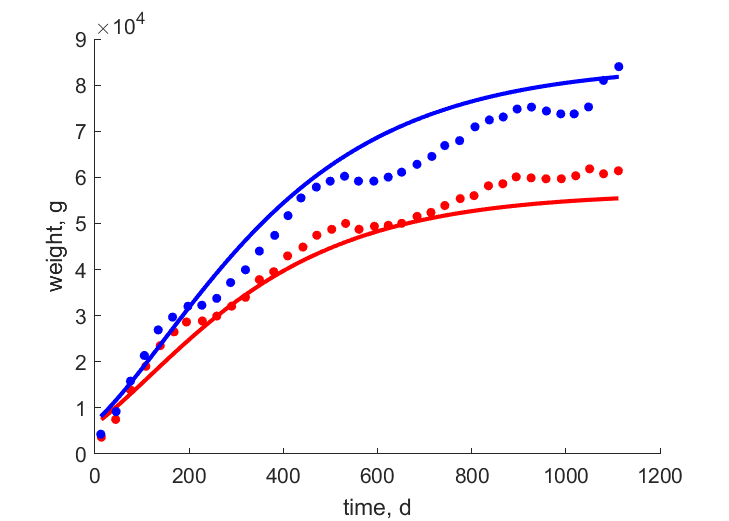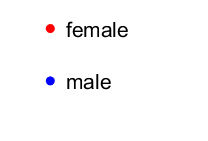Predictions & Data for this entry
| Model: stx | climate: Cfa, Dfa | migrate: | phylum: |
| COMPLETE = 2.5 | ecozone: THp | food: bxM, xiHl | class: |
| MRE = 0.049 | habitat: 0iTf, 0iTg | gender: Dg | order: |
| SMSE = 0.007 | embryo: Tv | reprod: O | family: |
Zero-variate data
| Data | Observed | Predicted | (RE) | Unit | Description | Reference |
|---|---|---|---|---|---|---|
| tg | 210 | 210.2 | (0.0008302) | d | gestation time | AnAge |
| tx | 172 | 193.7 | (0.1259) | d | time since birth at weaning | AnAge |
| tp | 500 | 508.9 | (0.01778) | d | time since birth at puberty | AnAge |
| am | 9600 | 9624 | (0.002516) | d | life span | AnAge |
| Wwb | 5750 | 5771 | (0.003707) | g | wet weight at birth | AnAge |
| Wwx | 2.859e+04 | 2.499e+04 | (0.1261) | g | wet weight at weaning | AnAge |
| Wwi | 5e+04 | 6.297e+04 | (0.2594) | g | ultimate wet weight females | Wiki |
| Wwim | 1.09e+05 | 9.395e+04 | (0.1381) | g | ultimate wet weight males | Wiki |
| Ri | 0.00274 | 0.002731 | (0.003054) | #/d | maximum reprod rate | AnAge |
Uni- and bivariate data
| Data | Figure | Independent variable | Dependent variable | (RE) | Reference |
|---|---|---|---|---|---|
| tWw_f |   | time | weight | (0.07171) | UchiIked2001 |
| tWw_m |   | time | weight | (0.09304) | UchiIked2001 |
Pseudo-data at Tref = 20°C
| Data | Generalised animal | Cervus nippon | Unit | Description |
|---|---|---|---|---|
| v | 0.02 | 0.08537 | cm/d | energy conductance |
| kap | 0.8 | 0.8629 | - | allocation fraction to soma |
| kap_R | 0.95 | 0.95 | - | reproduction efficiency |
| p_M | 18 | 52.54 | J/d.cm^3 | vol-spec som maint |
| k_J | 0.002 | 0.002 | 1/d | maturity maint rate coefficient |
| kap_G | 0.8 | 0.799 | - | growth efficiency |
Discussion
- Slow foetal development is assumend
- Males are assumend to differ from females by {p_Am} and E_Hp only
- mod_1: males have equal state variables at b, compared to females
Bibliography